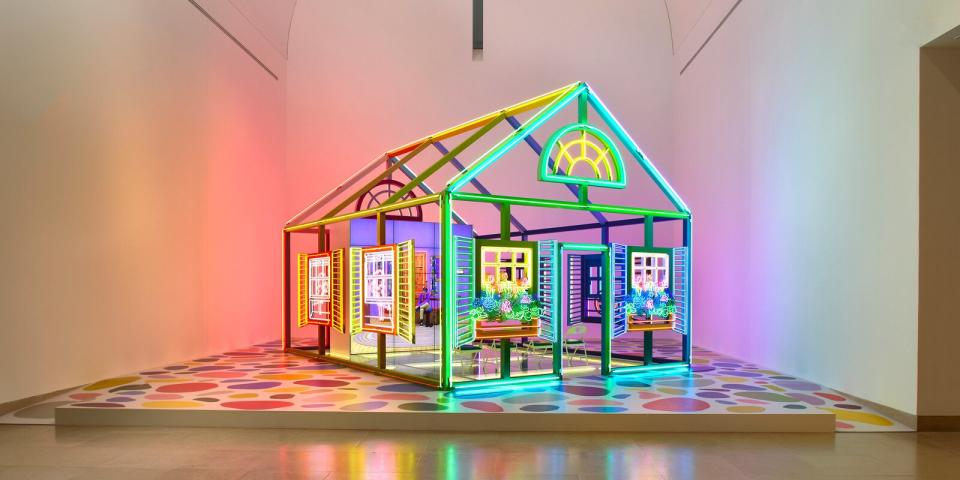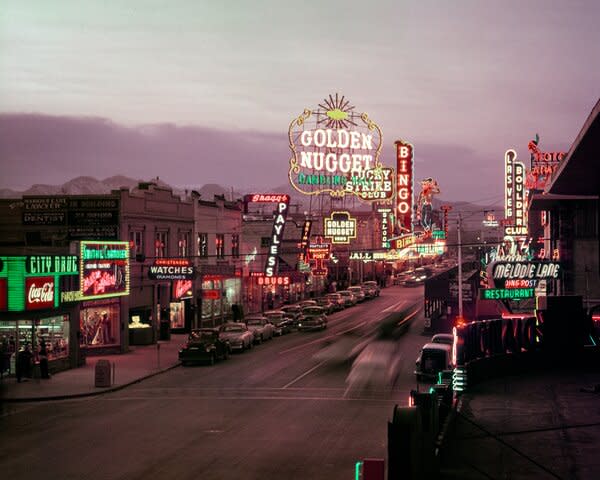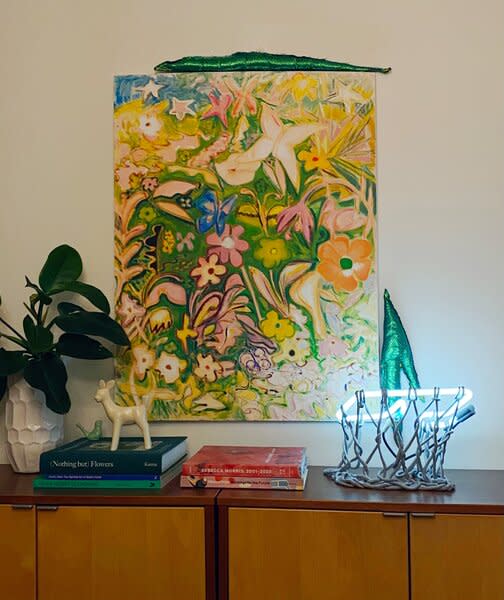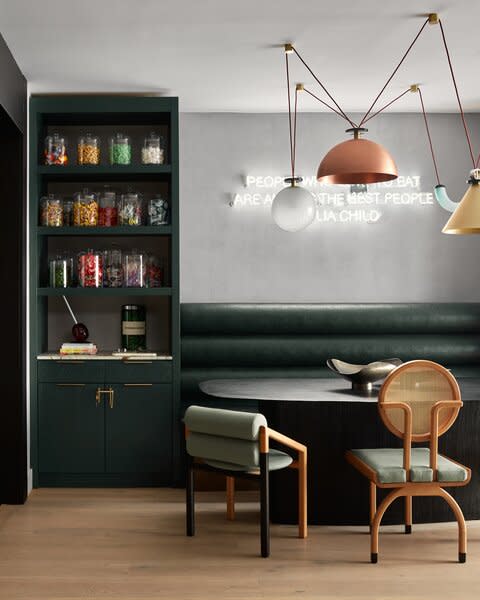The Neon Paradox: Is it Low Brow or High Art?
The answer to whether glowing decor is cool or corny has become…complicated.

The radiant glow of neon signage often signifies the worst of Americana kitsch. It’s consumerism, literally and figuratively, flashing in our faces. Sometimes it’s the beer and liquor ads flickering in the window of an otherwise dim bar; other times, it’s a mass-produced LED sign declaring Good Vibes Only on the wall of a sorority house or coworking space. On the flip side, neon and its LED counterparts are just as at home in fine art galleries; see Dan Flavin’s fluorescent tube installations, and MoMA Design Store, whose inventory includes the HAY Neon Tube Light and neon versions of works by Basquiat and Warhol. TikTok’s beloved LED light strips dominate dorms and apartments, and even Kendall Jenner has a cheeky Tracey Emin neon sculpture in her $8.6 million Beverly Hills home. A medium that garners both awe and groans, neon signage exists in an intriguing high brow/low brow paradox.
The reality is that neon signs sit at the crossroads of technology and art. "We can put lightning in a bottle and take this cosmic material and use it to sell hot dogs, or say something confessional, or make some sort of artwork," says Corrie Siegel, executive director of the Museum of Neon Art. "There’s just something really cool about how this material can mean so much."
To really "get" neon, however, is to understand its history. Neon lights first captured the world’s attention in 1910 when French inventor Georges Claude presented his electrified glass tubes at the Paris Motor Show. He then sold neon signs to businesses around Paris, and in the ’20s it made its way to United States business owners who used neon signage to catch consumers’ eyes. "It was the way that you would distinguish your business as with the times and as super classy, the best of the best," says Siegel. "So it had this sheen of high culture at the outset."
But they began falling out of favor in the ’60s with the advent of cheaper and safer illuminated signage options. This shift freed neon lighting to shine as a medium not for advertising, but for art. Artists in the ’60s, like Chryssa and Billy Apple, made some of the earliest examples of neon sculptures, while others like the aforementioned Flavin used neon-adjacent mediums, such as commercially produced fluorescent tubes. "People in counterculture started seeing it as a really potent symbol and art form that could communicate about our culture and could incite a response," says Siegel. This sentiment remained true in the ’70s and ’80s when neon became associated with urban decline, leading some cities to ban the signs. Today, however, neon lights are experiencing a resurgence of sorts, as vintage items—decor, technology, even holiday paraphernalia—have a current cultural stronghold. "Cities are using it now as a tool of urban revitalization, as opposed to the way it was seen in the ’80s," says Siegel. It doesn’t hurt that neon lights and their LED dupes photograph well; LED signs light up social media, whether it’s Instagram snaps of a hot brunch spot or a maximalist’s home tour on TikTok.
Because neon has flowed in and out of fashion so many times, existing as advertising and as art, and symbolizing luxury or decay, depending on the time period, it’s no wonder the medium provokes such varied reactions. Lena Imamura, cofounder of Manhattan’s Glo Studio, recalls a time when neon lighting was divided into two camps: beer signs on the low end, high art on the other. "Now there’s a lot in between and it’s Urban Outfitters, TikTok college dorm, tween neon, as well as the Etsy-Amazon neons," she says. "They’re primarily LEDs that are super poor quality and, as an artist, I would say in poor taste." At her studio, which produces custom art and signs made with neon and higher-quality LEDs, Imamura finds herself frequently justifying the price of her work (a Glo Studio LED cactus sells for $355, for example, versus a similar product on Amazon that retails for about $13).
It’s easy to rip off retro neon signs and mass produce them, but true neon requires skill and craftsmanship. Atlanta-based sculptor Jane Foley, for example, stretches and shapes hollow glass tubes, and blows air into them before adding noble gasses like neon or argon depending on which color they want (red and blue respectively). It’s something a machine can’t do, which feels like a novelty in a world dominated by technology. "We don’t think of neon signs like a painting or a drawing, but every single neon was made and blown by hand," Foley says. "There’s not an industrial process that can do that."
See the full story on Dwell.com: The Neon Paradox: Is it Low Brow or High Art?
Related stories:




